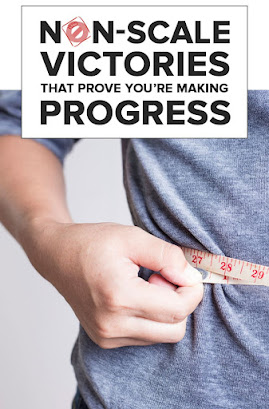"How to Measure Progress in the Gym"
The importance of tracking and measuring your progress to stay motivated, make informed adjustments to your fitness routine, and successfully achieve your fitness goals.
 |
| Image Credit: Google |
Here's a detailed guide on how to measure progress in the gym:
1. Set Clear and Specific Goals:
Before measuring progress, establish clear and specific fitness goals. Whether it's to improve strength, increase stamina, lose weight or build muscle, well-defined objectives provide direction and purpose for your workouts.
2. Record Baseline Measurements:
Begin by recording a baseline measurement. Note your weight, body measurements (such as waist, hips, chest, arms and legs) and body fat percentage (if possible). These initial measurements serve as a starting point for tracking changes over time.
3. Track Your Workout:
Keep a workout journal or use fitness apps to continuously record your workouts. Pay attention to the exercises, sets, repetitions and weights used for strength training, as well as the duration and intensity of cardiovascular workouts. Tracking your workouts helps ensure progressive overload and allows you to monitor improvements.
4. Monitor Performance Metrics:
Focus on performance metrics related to your fitness goals. For example:
- If your goal is strength: Track how much weight you can lift for specific exercises and monitor your progress over time.
- IF YOUR GOAL IS ENDURANCE: Record the duration and intensity of your cardio workouts and track improvements in your stamina and performance.
5. Assess Progress Photos:
Taking progress photos at regular intervals can provide a visual representation of your change. Sometimes, changes in body composition may not be immediately noticeable on the scale, but progress photos can reveal significant differences.
6. Use Fitness Trackers:
Fitness trackers and wearable devices can be valuable tools for monitoring various aspects of your fitness journey. They can track your heart rate, steps, distance covered, calories burned, and sleep patterns, giving you valuable information about your overall health and activity levels.
7. Make Fitness Assessment:
Do periodic fitness assessments to objectively assess your progress. These evaluations may include tests such as push-ups, sit-ups, squats, flexibility tests, and cardiovascular tests (for example, a timed run). Repeat the assessment every few weeks or months to track improvements.
8. Measure Changes in Body Composition:
In addition to weight, consider tracking changes in body composition as well. Body fat percentage, muscle mass and lean body mass are better indicators of progress than weight alone. Some gyms offer body composition analysis, or you can use tools like body fat calipers or smart scales at home.
9. Celebrate non-scale victories:
Remember that progress isn't just about the numbers on the scale. Celebrate nonverbal victories like improved energy levels, increased flexibility, better sleep, and increased confidence. These positive changes are equally important in your fitness journey.
10. Be patient and consistent:
Progressing in fitness takes time and dedication. Be patient and pay attention to your workouts and nutrition, because consistent effort over time leads to lasting results.
conclusion:
Measuring progress in the gym is essential for tracking your achievements, staying motivated, and making informed adjustments to your fitness routine. By setting clear goals, recording baseline measurements, tracking workouts, monitoring performance metrics, and celebrating all the small and big wins, you can stay on track and successfully achieve your fitness goals. Remember that everyone's journey is unique, so focus on your progress and enjoy the process of making yourself more healthy and fit.

.jpg)

